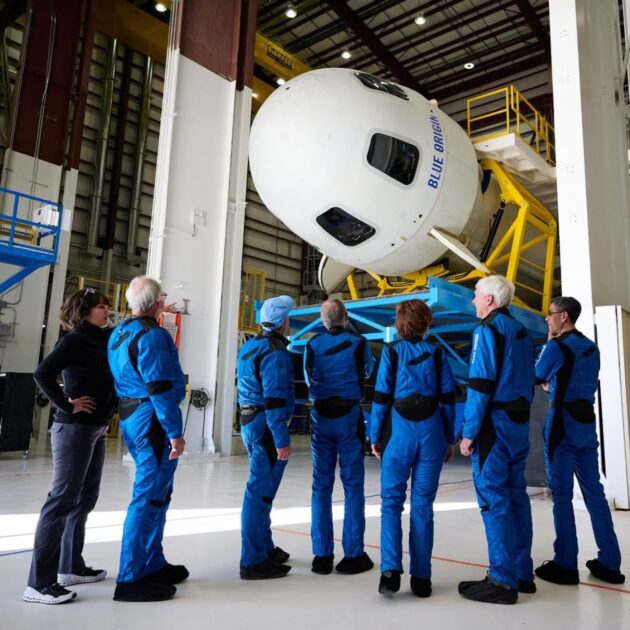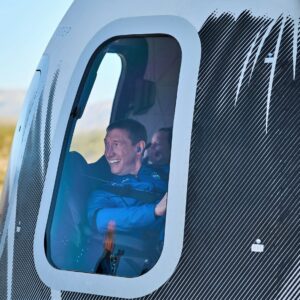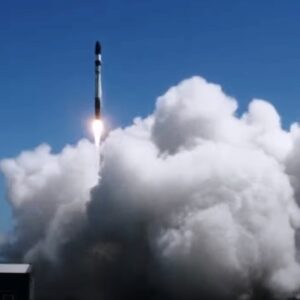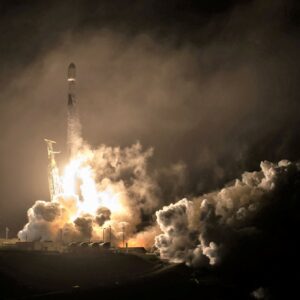
Amazon founder Jeff Bezos’ Blue Origin space venture has rescheduled its next crewed suborbital space mission for Thursday, due to concerns about the weather for Tuesday and Wednesday.
In a mission update, Blue Origin said “forecasted high winds during launch and recovery” forced a postponement of the liftoff from the company’s Launch Site One in West Texas. The National Weather Service said winds could reach sustained levels of 35 to 45 mph on Tuesday, with gusts up to 60 mph.
Six spacefliers — including the first married couple to go into space together in 30 years — have signed on for Blue Origin’s fourth crewed suborbital flight.
“The team has completed Flight Readiness Review and confirmed the vehicle has met all the mission requirement for flight,” Blue Origin said. “Astronauts are completing their training, and weather remains as the only gating factor.”
If all goes according to plan, Blue Origin will begin streaming-video coverage of the countdown and launch at 7:20 a.m. CT (5:20 a.m. PT) on Thursday. Launch updates will be passed along via Blue Origin’s Twitter account.
In an interview aired on “CBS News Mornings,” SpaceKids Global founder Sharon Hagle said that she and her husband, Tricor International CEO Marc Hagle, were “really excited to be here.”
“We want to inspire kids on STEAM+ education, particularly young girls, because they’re the next generation of space travelers,” she said. One of the activities that she and her crew members took on was filling out postcards that they”ll carry aboard their New Shepard spaceship for the Club for the Future, Blue Origin’s educational nonprofit group.
“Saturday Night Live” comedian Pete Davidson was originally scheduled to go on this week’s flight, but he had to bow out due to scheduling conflicts and was replaced on the crew by New Shepard’s chief architect, Gary Lai.
Lai told CBS that he’s long dreamed of flying on the spaceship he helped design.
“Hundreds of people — dedicated, brilliant people — have worked on this program, and I’m honored to be the one chosen to do it,” Lai said. “But I hope that all of them someday get this opportunity.”
The other crew members are George Nield, a former Federal Aviation Administration official who was involved in regulating commercial spaceflight; Jim Kitchen, a teacher and entrepreneur from North Carolina; and Marty Allen, an angel investor and former CEO of Party America.
Blue Origin’s reusable New Shepard craft is designed to carry the sextet beyond 100 kilometers (62 miles) in altitude for a few minutes of weightlessness and an astronaut’s-eye view of the Earth below.
Bezos flew on the first crewed mission last July. Star Trek captain William Shatner was part of the crew for the second flight in October, and Laura Shepard Churchley — the eldest daughter of pioneer NASA astronaut Alan Shepard — headlined the crew for the third flight last December. This is Blue Origin’s first flight in 2022, and the company says it plans to pick up the pace in the months ahead.
Budget looks to NASA’s future
The New Shepard suborbital space effort is just one of Blue Origin’s projects. The company is also leading the Orbital Reef consortium in a campaign to design a commercial space station for Earth orbit, and is vying to build a lunar lander for use in NASA’s Artemis moon program.
Both of those programs were addressed today in the Biden administration’s budget proposal for fiscal year 2023. The $25.973 billion sought for NASA includes $224 million for commercial space station development, and $1.486 billion for human landing systems.
Jim Free, NASA’s associate administrator for exploration systems development, said the $1.486 billion would support work on SpaceX’s lunar Starship variant as well as on a second commercial lunar lander, which may or may not turn out to be the one proposed by Blue Origin and its industry partners.
Free declined to say how much would be set aside for the second commercial team, on the grounds that providing a figure would tip NASA’s hand too much during the procurement process.
The Artemis program’s first moon landing is currently scheduled for 2025, using SpaceX’s Starship. NASA expects the second crewed mission to the lunar surface to take place in the 2027-2028 time frame.





